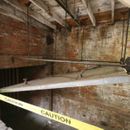Is Spray Polyurethane Foam prudent in this application?
I am renovating a 115 year old building in Denver, Colorado. The structure is triple-wythe solid-bonded very soft masonry. (See the attached photo.) I’d like to apply Spray Polyurethane Foam on the interior side of the wall and then overframe and drywall. (I can’t do anything to the exterior because the facade is landmarked.) I have two concerns:
1) That moisture which enters the wall from the exterior will not be able to get out and could cause laminar separation of the masonry due to the freeze-thaw cycle.
2) That over time the masonry will spall and therefore debond the Spray Polyurethane Foam.
Are these valid concerns? Are there any applicable case studies? Are there alternative foam products that would work better?
GBA Detail Library
A collection of one thousand construction details organized by climate and house part










Replies
Aaron,
Many of your questions are addressed in this article: Insulating Old Brick Buildings.
If you still have questions after reading the article, you can post them here.
Aaron,
Denver's climate is very forgiving for brick, because we rarely have freezing temps the night after a rain. If the precipitation happens near freezing temps, it's usually snow which won't make a cold wall wet.
However, Denver has a lot of crumbly, "sand brick". This is the brick that usually gets painted because it deteriorates. Painting the outside is almost always a really bad idea though, since it inhibits drying. Your photo looks like the crumbly brick with historic soft lime mortar
If the building has decent overhangs (12" or greater), that is also extremely helpful. Check the "splash zone" which is the lowest 18" of the wall. Embedded framing in that zone is always at risk.
Injecting foam into the wythe cavities is also worth considering as it preserves the brick interior wall.
Thanks to both of you. The article that Martin references is really helpful. To Kevin's point, unfortunately this is a flat roofed building so there is no overhang. We are probably going to nix the exterior paint though as you mentioned. It will be a few weeks before we decide how we are going to proceed with everything but I'll RE to this posting when we do. Thanks again.